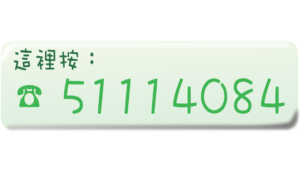So, not like permissioned or private blockchains, which are restricted to a limited number of nodes, permissionless blockchain is tamperproof. Since anybody difference between public and private blockchain can take part in the safety and upkeep of public blockchain, the system might be safer. The nodes in a public blockchain network wouldn’t have regulations to observe. All the participants/users are empowered to work on the community and participate within the validation of truncations with no central authority overlooking their every act. As the name implies, a hybrid blockchain combines characteristics of both public and private blockchains. The hybrid blockchain permits customers to ascertain a system that permits them to create a permission-based system for private use and a permissionless system for public utilization.

Disadvantages Of Public Blockchains
The programme goals to equip learners with the mandatory data and abilities to conceptualise, design, and create DAOs successfully. In each circumstances, the validity of the entry is checked, thus making certain a big stage of immutability, which helps stop tampering with the information. You can learn extra about Crypto, Blockchain and Web 3.0 on ZebPay Blogs. Every block within the chain has a hash linked to the earlier block’s hash. If someone tries to alter one block, it’ll change the hash of each block after it.
Choosing The Right Blockchain Community For Your Business
On the other hand, non-public blockchains are centralized, that means that there’s a central authority or group that controls the network. In a public blockchain, there isn’t any central authority or group that controls the network. The network is rewarded for maintaining safety and for the continuing transactions being made on the network. Different banks can band together and type a consortium, deciding which nodes will validate the transactions.

Distinction Between Personal And Consortium Blockchain
- In a method, it’s decentralised, with restricted access among Mos’s guardians and his health care providers.
- That method is a consensus algorithm whereby participants within the blockchain attain settlement on the current state of the ledger.
- Using public blockchain expertise, every immunisation centre collects the information and publishes it on the official web site.
- While these problems could also be true in some cases, blockchains can be effectively governed in a way that doesn’t essentially need to be difficult and inefficient.
With the info decentralisation property of public blockchain expertise, the network eliminates such malicious activity. It implies that, once the vaccination information is entered, it’s unalterable. For a greater understanding, let’s contemplate infant immunisation information.
Disadvantages Of Consortium Blockchains
The Income Tax Act, 1961 and the Competition Act, 2002, acknowledge this concept of an association of individuals and therefore prevent DAOs from ‘slipping beneath the radar and being thought-about nefarious. The identifiers like IP addresses can find from the place the transaction has taken place but it does not outline who has entered into such a transaction. The actual identification isn’t linked and therefore it gets tough for the regulators to carry participants accountable.
Before going into more element on public and private blockchains, here’s a summary of between these two main types of blockchains. The disadvantages of personal blockchains embody the controversial declare that they don’t appear to be true blockchains, for the reason that core philosophy of blockchain is decentralization. It’s also tougher to completely obtain belief within the data, since centralized nodes decide what is legitimate. In this respect, personal blockchains are vulnerable to information breaches and different safety threats. This is as a end result of there are typically restricted validators used to succeed in a consensus about transactions and data (if a consensus mechanism is needed). In a non-public blockchain, there is most likely not a necessity for consensus, only the immutability of entered knowledge.
However, to maximise information safety, this is not a apply that Dock implements as sensitive data is normally stored off chain. When a transaction happens, it is verified by the community of nodes (computers) on the blockchain. Once the transaction is confirmed, it’s recorded as a new block on the chain. Each node on the network has a duplicate of the blockchain, ensuring that everybody has access to the same data and that there is not any single point of failure.
As extra industries undertake blockchain options, having this data becomes a big advantage within the job market. Students who full these blockchain programs gain sensible skills that can be utilized to real-world eventualities, making them more useful to employers. Additionally, understanding blockchain expertise helps people keep knowledgeable in regards to the latest developments in digital currencies and monetary systems. Overall, taking blockchain expertise courses is a great transfer for anyone thinking about the method ahead for expertise and finance.

In a personal blockchain, the community is controlled by a single organization. To establish which participant/user is becoming a member of the network, private blockchains make use of an authorisation process. Privacy of transactions beneath public blockchain networks is almost none. Public ledger lets you see any community at any time though there isn’t a scope for discrepancies as the information as quickly as recorded cannot be tampered with later.

Public blockchain is non-restrictive and permissionless, and anybody with web access can sign on to a blockchain platform to turn into an authorized node. This user can entry current and past data and conduct mining actions, the advanced computations used to verify transactions and add them to the ledger. No legitimate document or transaction may be changed on the community, and anyone can verify the transactions, find bugs or propose changes because the supply code is often open source. Public blockchains are used in cryptocurrencies and decentralized finance as a outcome of they can function a spine for practically any decentralized answer. Additionally, the vast number of community members that can be a part of a secured public blockchain keeps it secure from knowledge breaches, hacking makes an attempt, or different cybersecurity issues.
Hence, an intensive understanding of the benefits and disadvantages of each kind of blockchain is important. Verifiable Credentials and decentralized identifiers (DIDs) are technological instruments for digital identification management that are commonly backed by public blockchains. They allow individuals to control their very own id knowledge whereas nonetheless having the flexibility to show their id and claims.
Read more about https://www.xcritical.in/ here.

